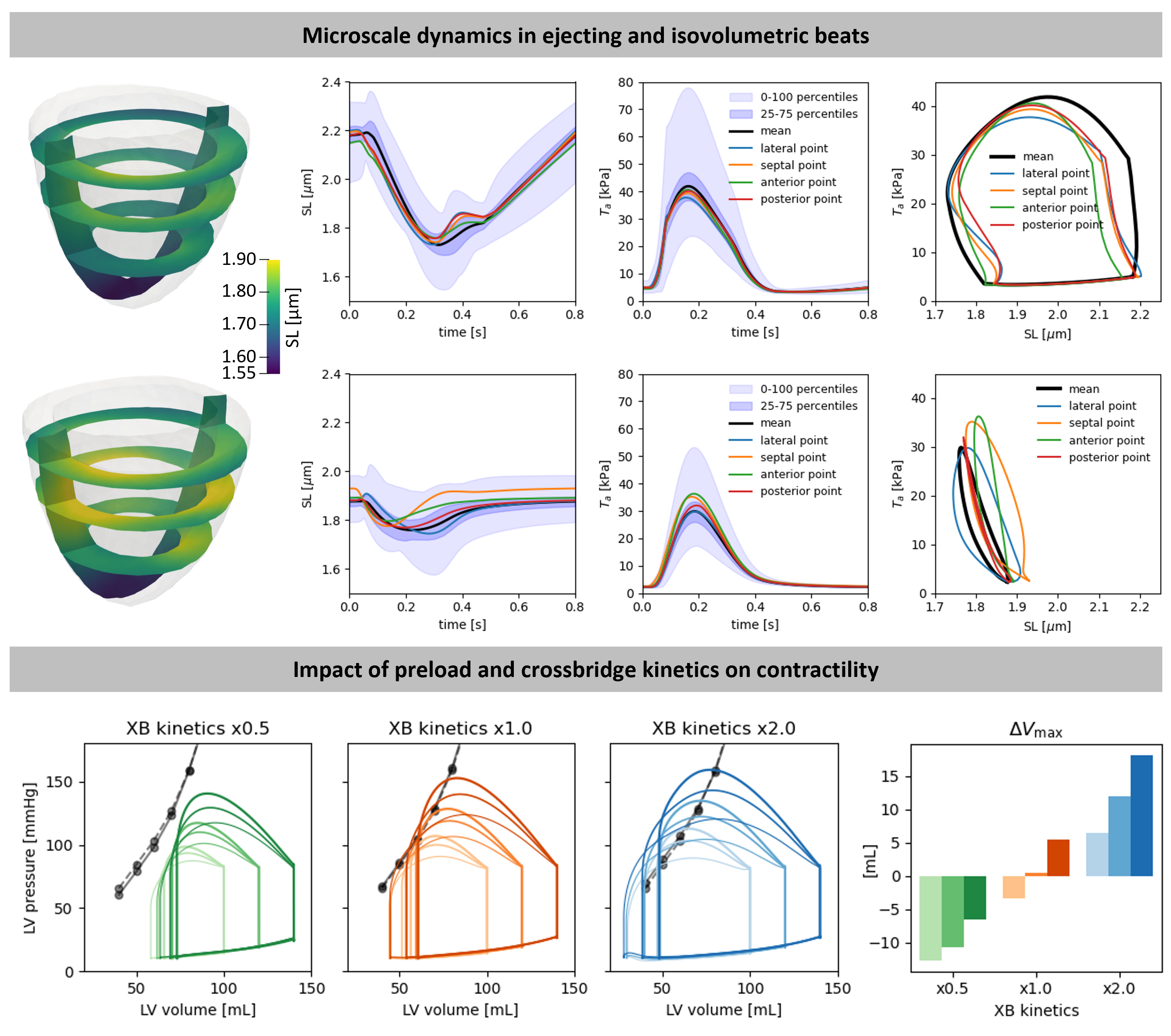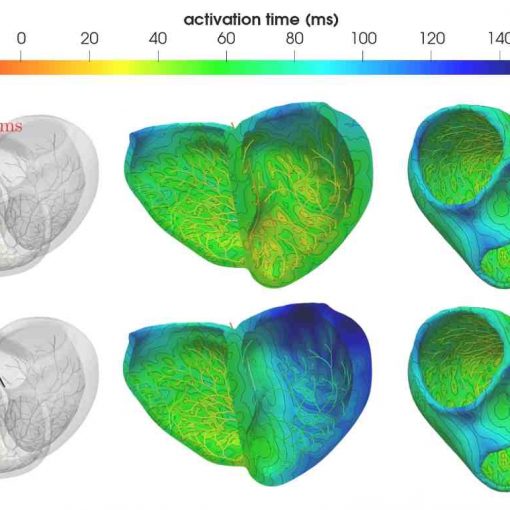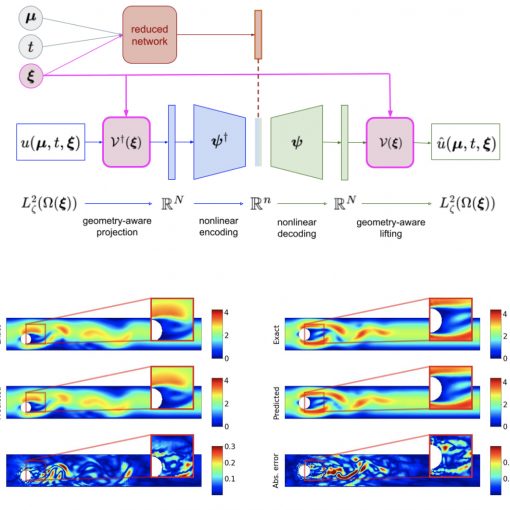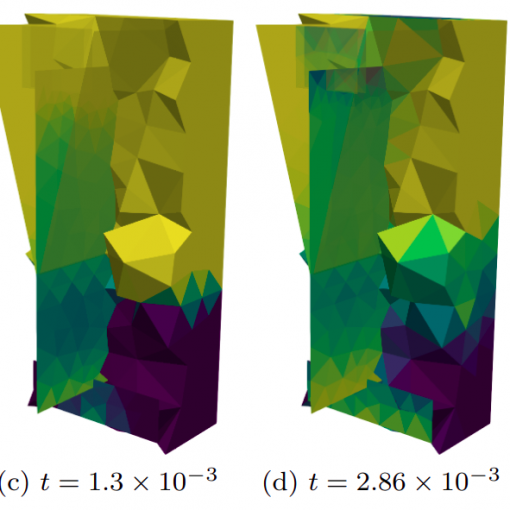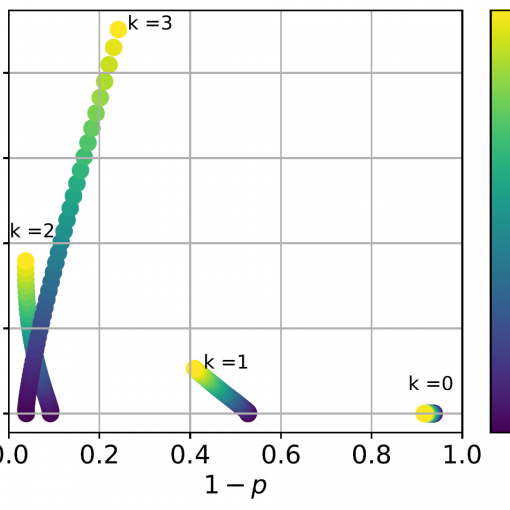A new MOX Report entitled “Elucidating the cellular determinants of the end-systolic pressure-volume relationship of the heart via computational modelling” by Regazzoni, F.; Poggesi, C.; Ferrantini, C. has appeared in the MOX Report Collection. Check it out here: https://www.mate.polimi.it/biblioteca/add/qmox/88-2024.pdf Abstract: The left ventricular end-systolic pressure-volume relationship (ESPVr) is a key indicator of cardiac contractility. Despite its established importance, several studies suggested that the mechanical mode of contraction, such as isovolumetric or ejecting contractions, may affect the ESPVr, challenging the traditional notion of a single, consistent relationship. Furthermore, it remains unclear whether the observed effects of ejection on force generation are inherent to the ventricular chamber itself or are a fundamental property of the myocardial tissue, with the underlying mechanisms remaining poorly understood. We investigated these aspects by using a multiscale in silico model that allowed us to elucidate the links between subcellular mechanisms and organ-level function. Simulations of ejecting and isovolumetric beats with different preload and afterload resistance were performed by modulating calcium and cross-bridge kinetics. The results sugges! t that th e ESPVr is not a fixed curve but depends on the mechanical history of the contraction, with potentially both positive and negative effects of ejection. Isolated tissue simulations suggest that these phenomena are intrinsic to the myocardial tissue, rather than properties of the ventricular chamber. Our results suggest that the ESPVr results from the balance of positive and negative effects of ejection, respectively related to a memory effect of the increased apparent calcium sensitivity at high sarcomere length, and to the inverse relationship between force and velocity. Numerical simulations allowed us to reconcile conflicting results in the literature and suggest translational implications for clinical conditions such as hypertrophic cardiomyopathy, where altered calcium dynamics and cross-bridge kinetics may impact the ESPVr.
You may also like
A new MOX Report entitled “Coupled Eikonal problems to model cardiac reentries in Purkinje network and myocardium” by Brunati, S.; Bucelli, M.; […]
A new MOX Report entitled “Handling geometrical variability in nonlinear reduced order modeling through Continuous Geometry-Aware DL-ROM” by Brivio, S.; Fresca, S.; […]
A new MOX Report entitled ” A hybrid upwind scheme for two-phase flow in fractured porous media ” by Ballini, E.; Formaggia, […]
A new MOX Report entitled “Improved amplitude amplification strategies for the quantum simulation of classical transport problems” by Alessandro Andrea Zecchi, Claudio […]

